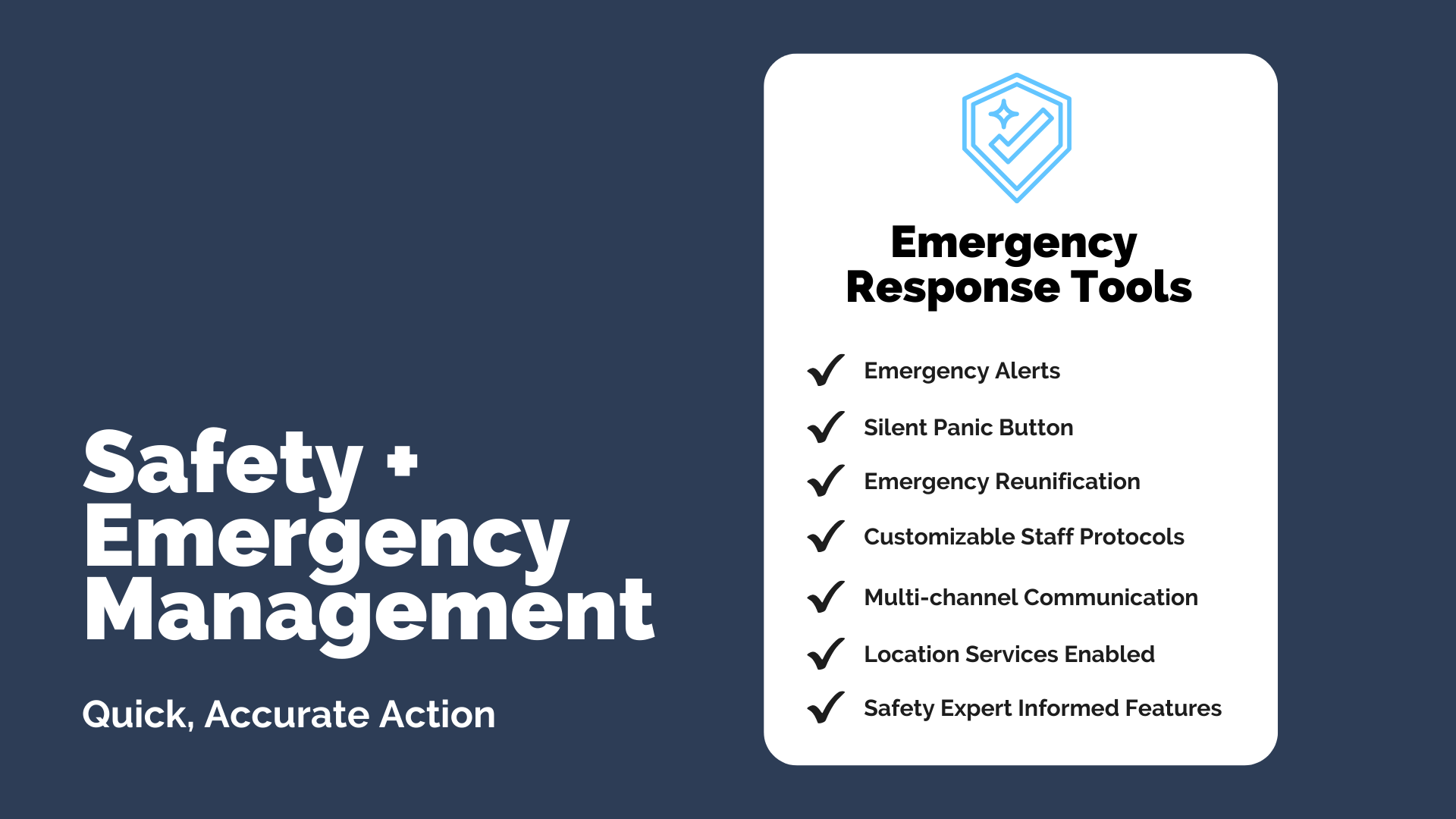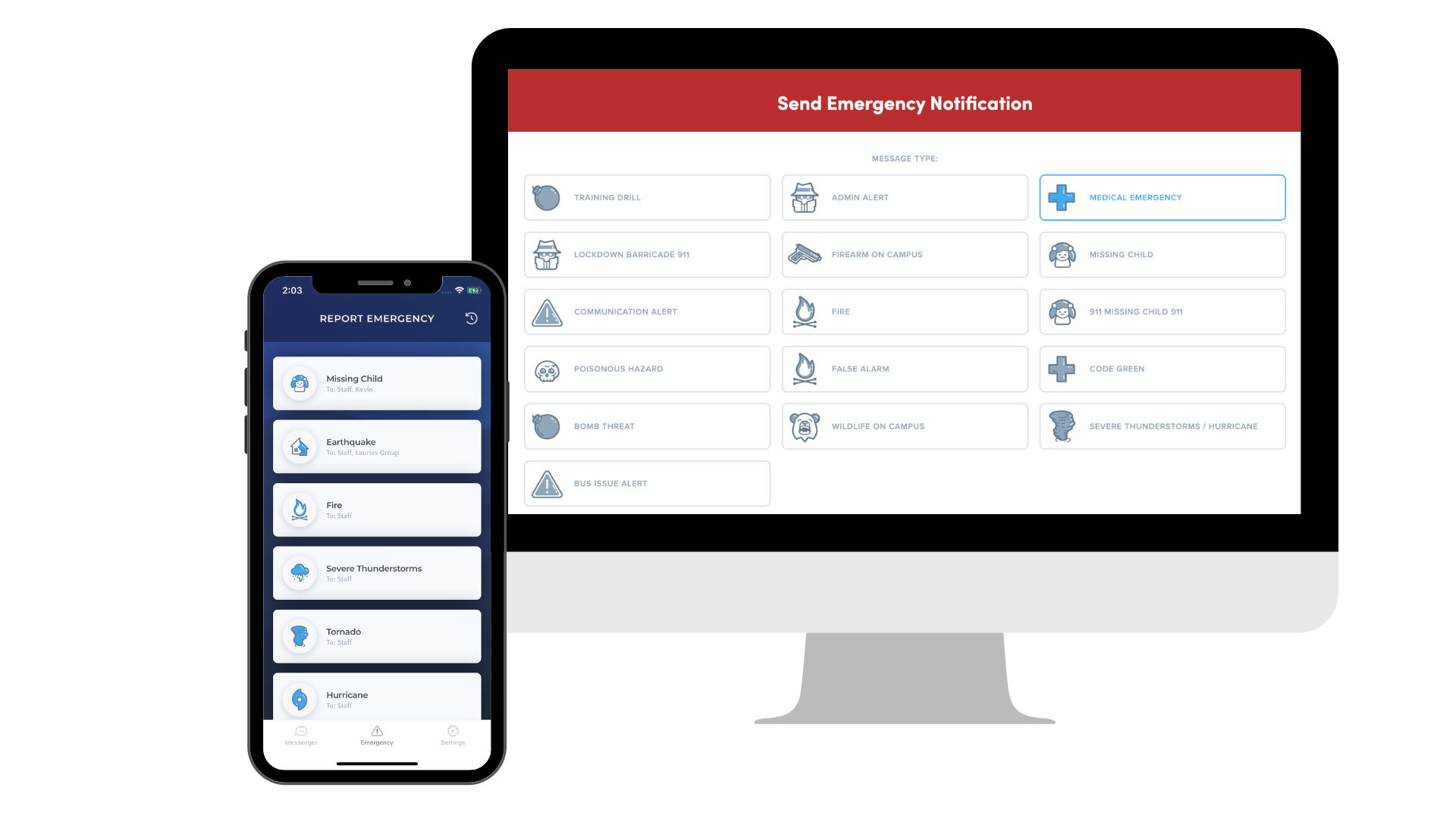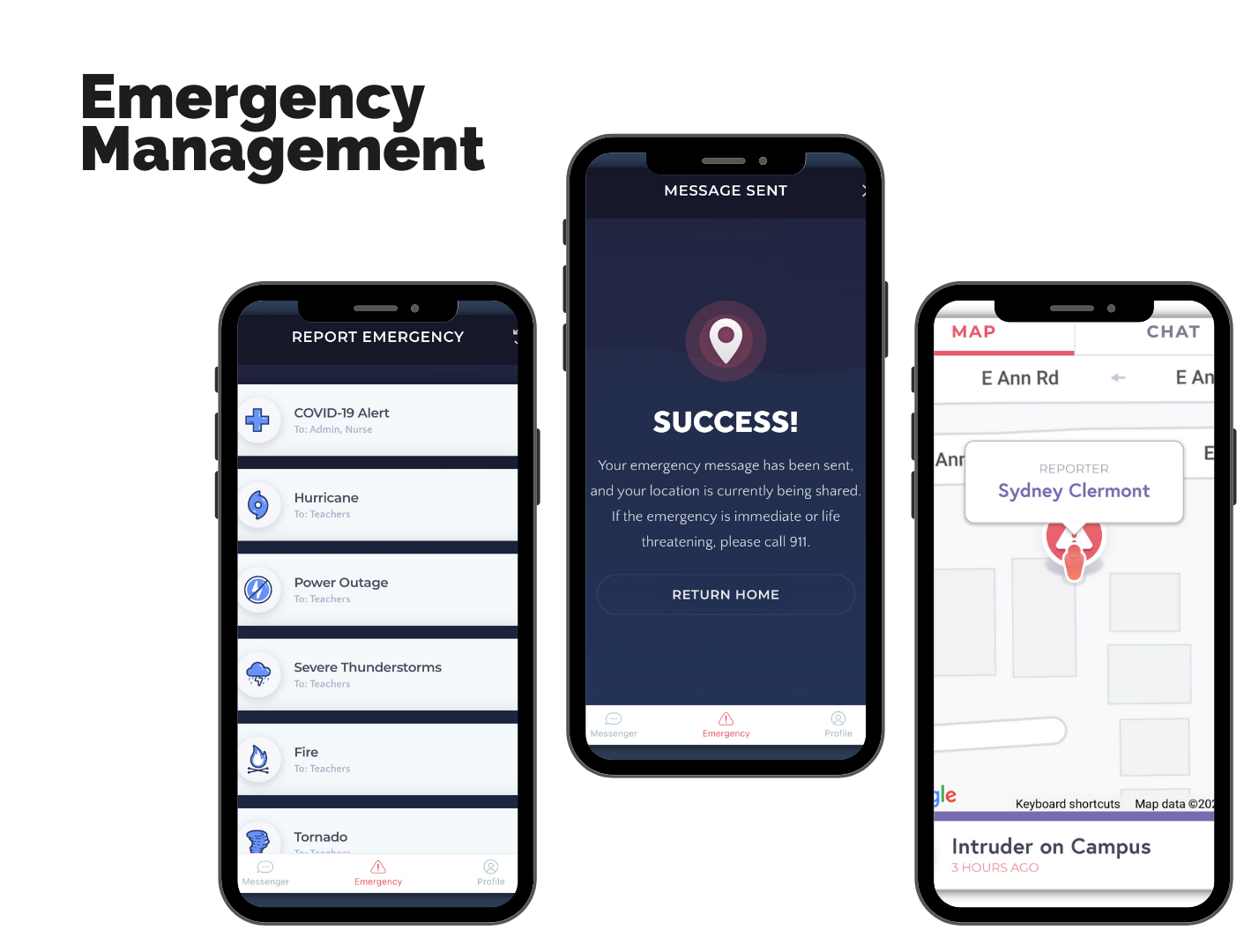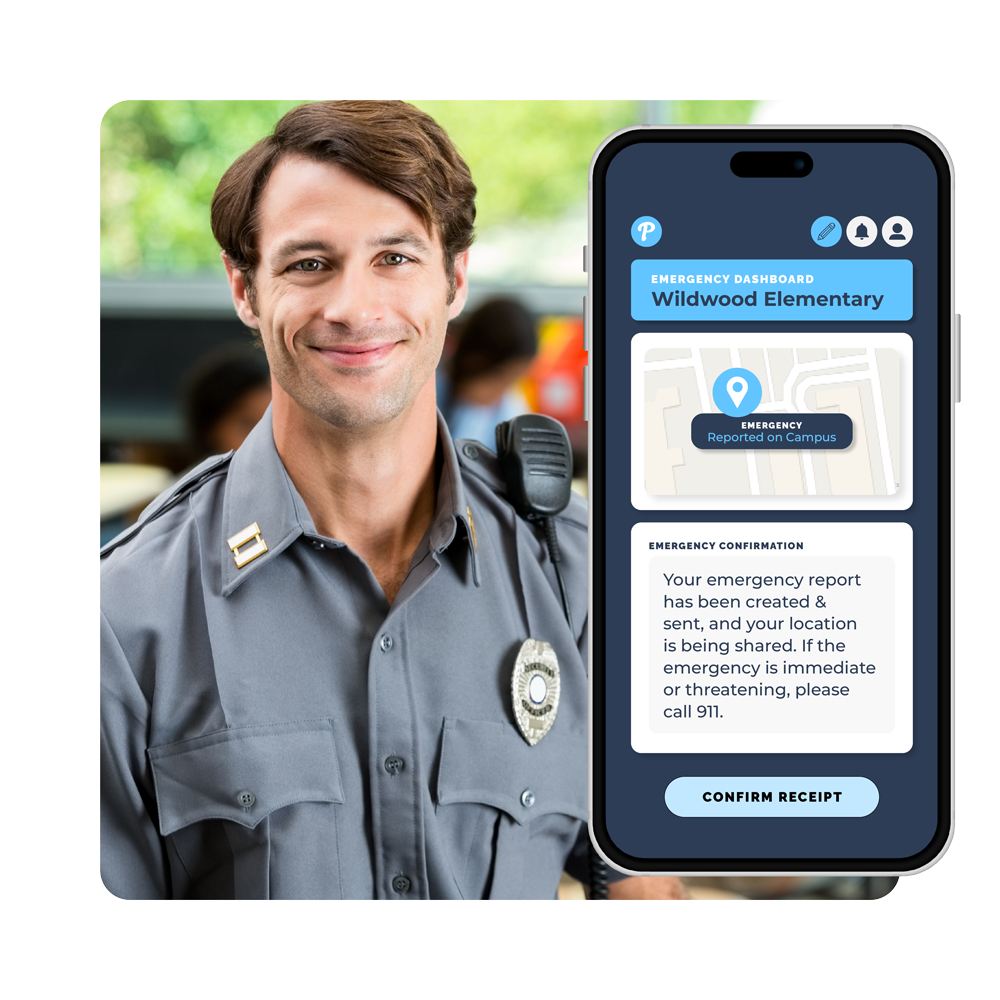As someone who’s involved in education, you may be aware of Alyssa’s Law, or Alyssa’s Alert, which was implemented to improve the safety of students and staff in schools by ensuring that emergency responders are alerted to a threat as quickly as possible, potentially reducing the number of casualties in the event of an emergency.
In this Article We’ll Cover:
- What is Alyssa’s Law?
- What do you need to meet the requirements?
- How does meeting Alyssa’s Law benefit a district?
- How does Pikmykid compare to other tools that are Alyssa’s Law compliant?
- Hear for yourself how one teacher applauds Pikmykid for how it implements Alyssa’s Law requirements.
- How have schools tried to keep students safe in the past and what was missing?
- You can improve your school safety with a platform that is Alyssa’s Law compliant.
What is Alyssa’s Law?
Alyssa’s Law is named for 14-year-old Alyssa Alhadeff, whose life was tragically taken during the Marjory Stoneman Douglas school shooting on February 14, 2018. Alyssa’s law requires all public schools to have panic alarms that can be activated in the event of an emergency, such as a school shooting or other dangerous situation.
Which states require Alyssa’s Law to be followed?
The law first came into effect in 2019 and many states have since passed or have pending legislature to implement similar laws, including:
- Alabama – in progress
- Arizona – in progress
- Florida – passed June 30, 2020
- Georgia – in progress
- Maryland
- Silent Alert grant – passed April 25, 2024
- Massachusetts – in progress
- Michigan – in progress
- Nebraska – in progress
- New Jersey – passed February 6, 2019
- New York – passed June 23, 2022
- Oklahoma- in progress
- Oregon – in progress
- Silent Alert grant – passed September 2023
- Pennsylvania – in progress
- Tennessee – in progress
- Texas – in progress
- Utah – passed April 2024
- Virginia – in progress
What do you need to meet Alyssa’s Law Requirements?
So, here’s what you really want to know… what needs to be included in your emergency system for you to meet Alyssa’s Law requirements. Your system must be capable of the following:
- Directly Notifies First Responders
- Enables Silent Communication
- Mobile Transportation (specific to Florida)
How would it work?
Several different options now exist for systems that meet the criteria for Alyssa’s Law. However, only one combines these vital emergency tools and dismissal management into an all-in-one safety system. Since arrival and dismissal are two of the most vulnerable times of day for a school with visitors on campus, this combination becomes imperative.
The Pikmykid platform has a customizable silent panic button and emergency alert system built in for schools to quickly and easily inform first responders of an emergency on the school’s campus via a mobile app.
This is what it would look like…
- Schools connect the correct responding agency to the emergency alert for a particular crisis, such as law enforcement.
- When a staff member clicks the silent panic button, Pikmykid sends out silent text messages and voice calls to report the emergency to those first responders.
- The first responders also receive a location ping from the exact location of the staff member so they can address the emergency immediately and know where to go.
Request a demo to see how the platform would work for your school and district.
By implementing a platform that meets Alyssa’s Law, a district will be able to safely and quickly address every emergency on all of their campuses. Streamlining their emergency alert system with their dismissal process gives them better insight into potential gaps in their safety protocol and empowers them to build safety into every part of the school day, including arrival, during the day, and dismissal.
Since the platform can be used throughout a district’s elementary, middle, and high schools, everyone in the community is better informed and equipped to be a part of building safety into the school day with consistent communication and processes. And they’ll have peace of mind knowing the gap between when an emergency occurs and when first responders are notified is eliminated.
How does Pikmykid compare to other tools that are Alyssa’s Law compliant?
Many other tools that address Alyssa’s Law do not include the other important safety integrations to protect students and staff during the entire school day. This can cause increased risks to students and staff, and come at a higher price point since you’ll need to buy more than one system.
With an all-in-one platform like Pikmykid, you’ll have several benefits that other tools do not offer. You’ll be able to:
- Manage emergencies and dismissal from the same place, on an easy-to-use platform with built-in safety tools informed by experts in school safety.
- Equip every staff member with a silent panic button in their pocket to use not only for an intruder, but also to alert and provide easy protocol for the dozen other more frequent emergencies that take place, such as medical emergencies and power outages.
- Empower the whole community to react appropriately during emergencies with clear emergency reunification plans you can communicate instantly to parents and staff on a platform they check all throughout the day, their mobile phone.
Created with student safety in mind, Pikmykid has evolved from a school dismissal automation software into a fully comprehensive safety platform with over 2,000 schools in all 50 states and several countries using the platform on a daily basis.
Having been the leading dismissal management software for many years, Pikmykid was recently recognized in the 2022 EdTech Breakthrough Awards with the School Safety Innovation Award.
We’re standing by to show you how it works. Schedule your personalized demo today. 
Hear for yourself how one teacher applauds Pikmykid for how it implements Alyssa’s Law requirements.
(By Rachel Goldschein)
As a former teacher, I applaud the Pikmykid emergency alert system for including several specific features.
- Real-Time Alerts
Alyssa’s law requirements include an alert system that notifies first responders in real-time. This will decrease what Steven Crimando refers to as the “response gap,” which is the time between the beginning of an incident and the arrival of emergency responders.Because Pikmykid can be downloaded on all school staff members’ devices, an alert can be sent to the appropriate emergency response team by any staff member anywhere on campus at the onset of any emergency event. The need to be near a landline or PA system to inform administrators and teachers of an emergency is eliminated.
- Being Easily Accessible
In the times we live in, most mobile devices are not far from reach. Pikmykid is an app teachers can put on their phones, and when an alert is triggered, a phone call and a text message will be sent to users in the appropriate contact groups.The emergency number can be added to phones so the alert can bypass Do Not Disturb settings that most teachers will have enabled on their phones during the school day.
- Silent Communication
My last teaching job was in a middle school. A common complaint among teachers was that sliding the red or green placards underneath the door or displaying them in the window indicates to an intruder that the room has students in it.The Pikmykid emergency alert system allows teachers to silently respond in a group message that the class is safe and accounted for or that there is a missing or injured student. The chat feature can also be utilized to update an intruder’s whereabouts to fellow staff members and emergency responders.

How have schools tried to keep students safe in the past and what was missing?
Teachers, staff, and students routinely practice how to barricade themselves in classrooms, hide, so it looks like no one is in the room, and shelter in place until the threat has been resolved. Some schools and districts are even training teachers on how to create tourniquets to stop major bleeding.
Most classrooms have instructions for all emergency drills.
Most schools have instructions for all emergency drills that are to be on a clipboard or in a folder and located near the classroom exit. Accompanying the emergency information are two placards: one red and one green. For fire drills, these placards are held in the air to indicate all students are present and accounted for (green) or a student is missing (red).
During lockdown drills, these placards are slid underneath the door or affixed in the door window to alert administration or emergency responders. Some schools equip teachers with two placards of each color, one for the door window and one for the exterior side classroom window. Teachers and students are well trained on what to do in intruder situations.
Still, an essential piece of the safety plan is missing. Who is responsible for alerting an outside agency of an intruder, and how can the agency be alerted quickly/silently? That’s where platforms that are Alyssa’s Law compliant come in to address this gap in school safety. 
You can improve your school safety with a platform that is Alyssa’s Law compliant.
At Pikmykid, we believe students deserve safety at school no matter their zip code. School environments are constantly changing based on the latest trends, research, or political legislation.
One thing that should be secure, steadfast, and unwavering in a school is teacher and student safety. Alyssa’s law requirements oblige schools to have a mobile alert system in place to alert authorities in the event of an emergency. Pikmykid delivers a mobile alert for various emergencies, location services, and silent communication between staff and emergency responders.
What does your school, your teacher friend’s school, or your student’s school have in place to ensure immediate communication and emergency response?





